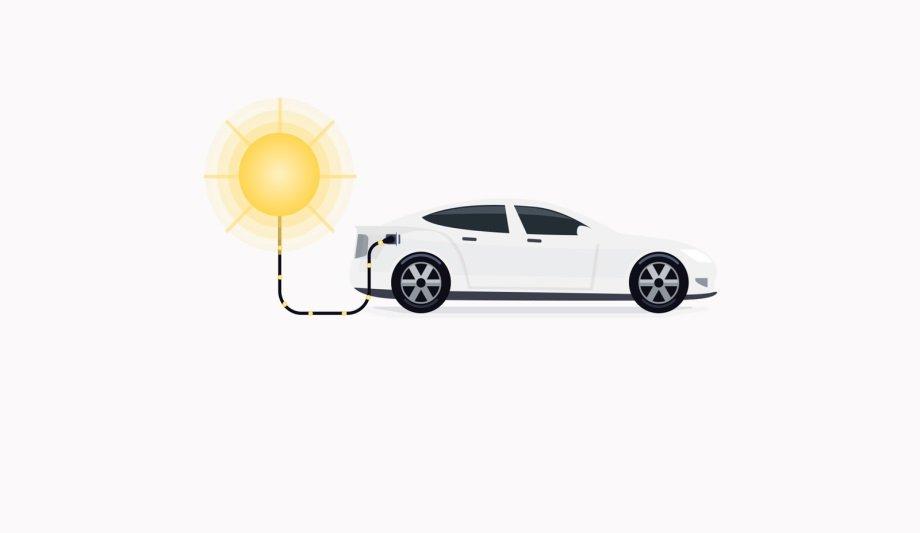An EV is only as sustainable as the electricity used to charge it. Therefore, net zero mobility not only requires the electrification of cars but also the widespread availability of green energy. Sourcing this green energy locally from PV systems also reduces the strain on the public grid and lowers costs.
More sustainable, more grid-friendly, less costly: Sounds like a win-win-win situation. So how can this work?
Connecting PV system and charging points
Generally, some sort of connection between the PV system and the charging infrastructure is required to enable PV charging. This connection can be established by two means:
- Integrated – Either the inverter of the PV system or the charging station features an energy management system to handle surplus PV production.
- External – A separate controller monitors and manages energy flows in the system.
Dealing with uncertainty
A single cloud, for example, may reduce PV production to almost zero for a brief period before it jumps back up
PV production is characterized by high levels of uncertainty. A single cloud, for example, may reduce PV production to almost zero for a brief period before it jumps back up. Most EVs, however, require a minimum power of 6 Ampere per phase to charge.
Therefore, it is not possible to simply charge any surplus production into connected EVs. To solve this conflict most systems work with a threshold. Once the PV surplus surpasses this threshold, charging starts. If the surplus drops below this threshold again charging is continued for a given period to accommodate brief drops in production.
Striking a balance between mobility and sustainability
Simply speaking there is a conflict between mobility and sustainability. If charging is optimized for sustainability, charging is only possible when there is a sufficient PV surplus.
Thus, charging could be delayed for days if there is no surplus. If charging optimizes for mobility, on the other hand, it charges as quickly as possible – even if no solar power is available. The best balance depends on the user’s individual preferences. Therefore, gridX solutions put the user in charge and offer three different charging options:
- Pure PV charging – Charging only takes place in case the PV surplus is sufficient.
- Program charging – The user enters a desired range and time of departure. The energy management attempts to charge as much as possible from solar power. If this does not suffice to meet the range in time, additional power sources are utilized.
- Minimum charging – The user sets a minimum range. This range is charged as fast as possible. Once the range is reached, charging is only continued if surplus solar power is available.
Not just good for the environment
As electricity prices soar, the incentive to increase self-sufficiency is becoming bigger and bigger
There is also a financial aspect. As smartEn pointed out in a recent report, financial incentives are still the key driver of prosumers. Luckily, the business case for PV charging is also quite convincing. As the subsidies for the feed-in of renewable energy are phased out in Germany and electricity prices soar, the incentive to increase self-sufficiency is becoming bigger and bigger. Moreover, legislators are increasingly removing regulatory barriers to promote renewable energies.
The new renewable energy act introduced at the beginning of 2021 in Germany, for example, exempts PV systems up to 30 kWp from the renewable energy surcharge up from 10 kWp. This makes solar power more appealing to prosumers with higher energy consumption.
Enormous potential
Solar can make a tremendous contribution to sustainable mobility. The German E-Mobility Association estimates that around 90% of charging procedures take place at work or home. Thus, the availability of carbon-neutral electricity at work and home can make a tremendous contribution to more climate-friendly mobility.
Additionally, the looser time constraints and lower volumes of charging at home or work provide the flexibility needed to accommodate the uncertain nature of renewable energies without compromising on mobility.






